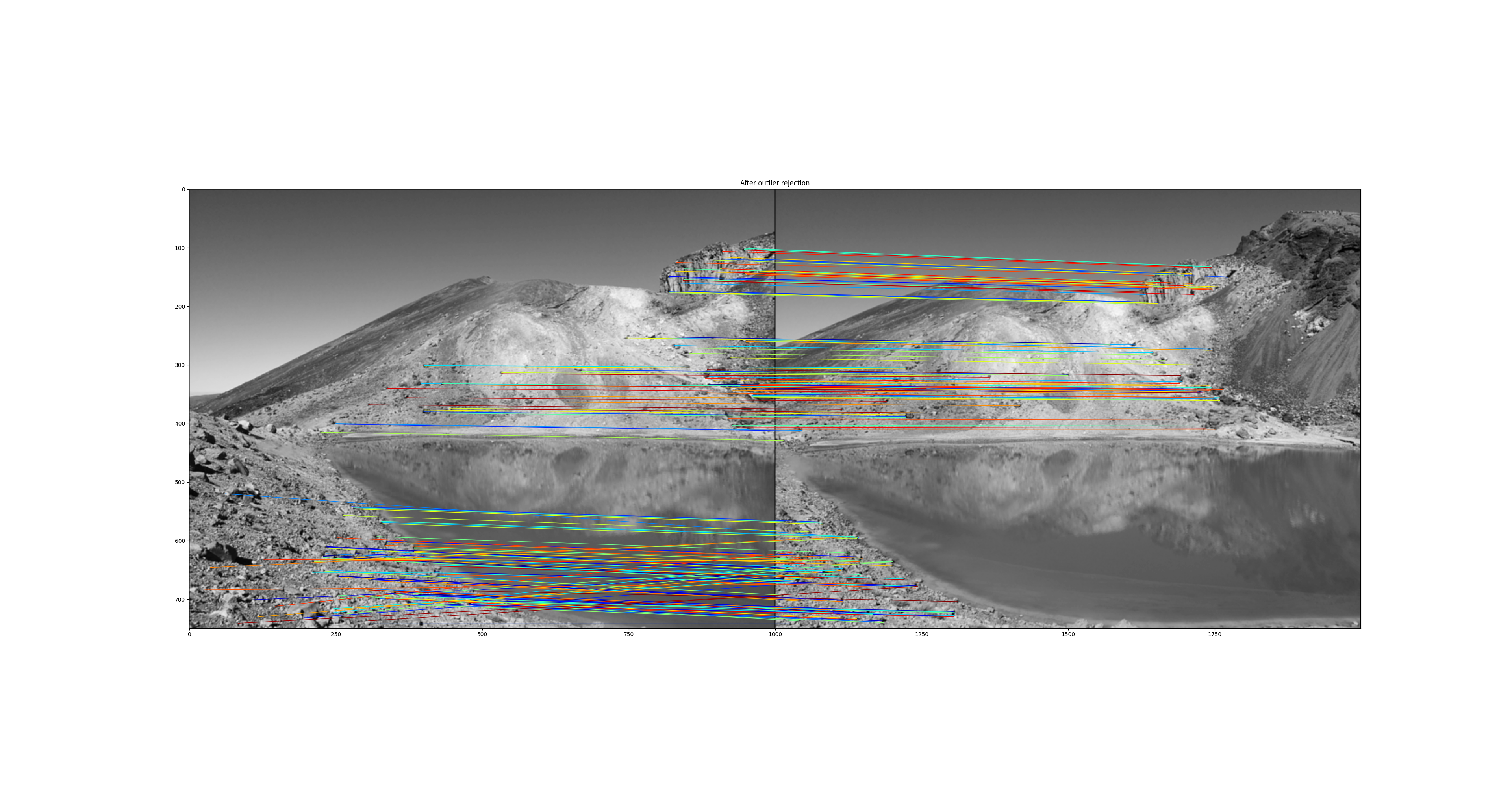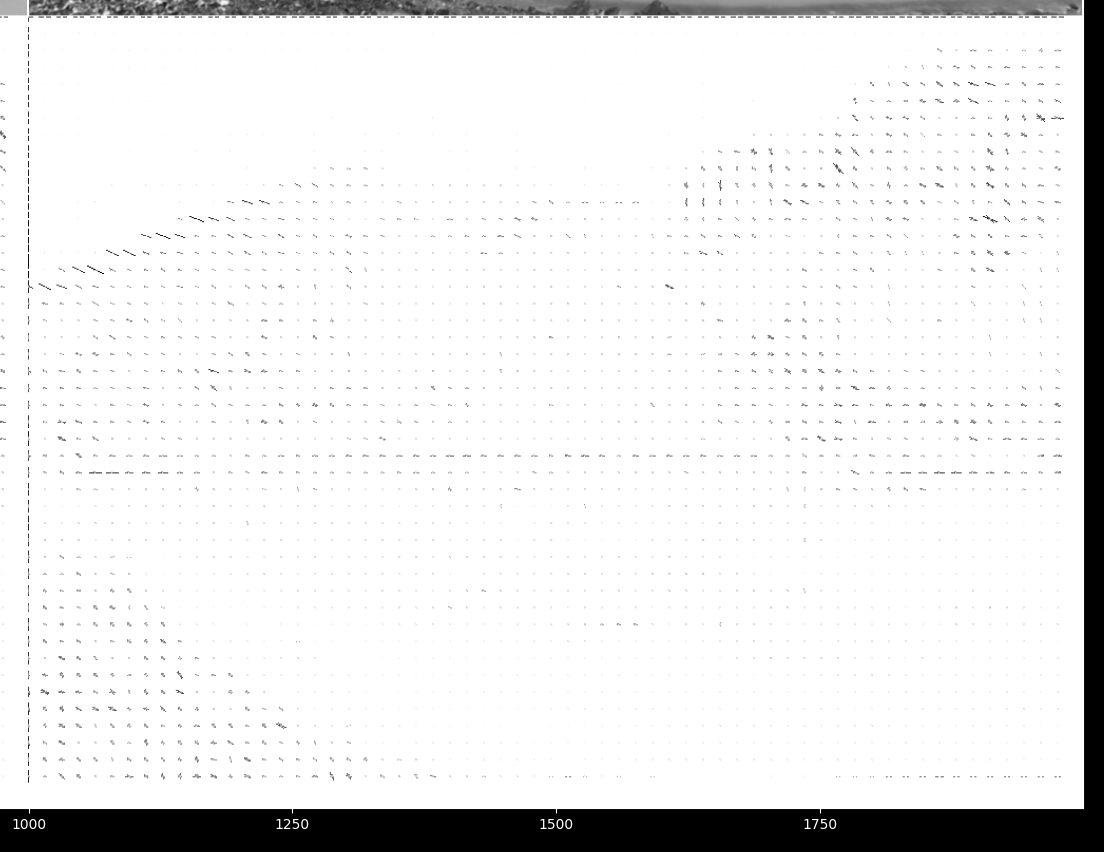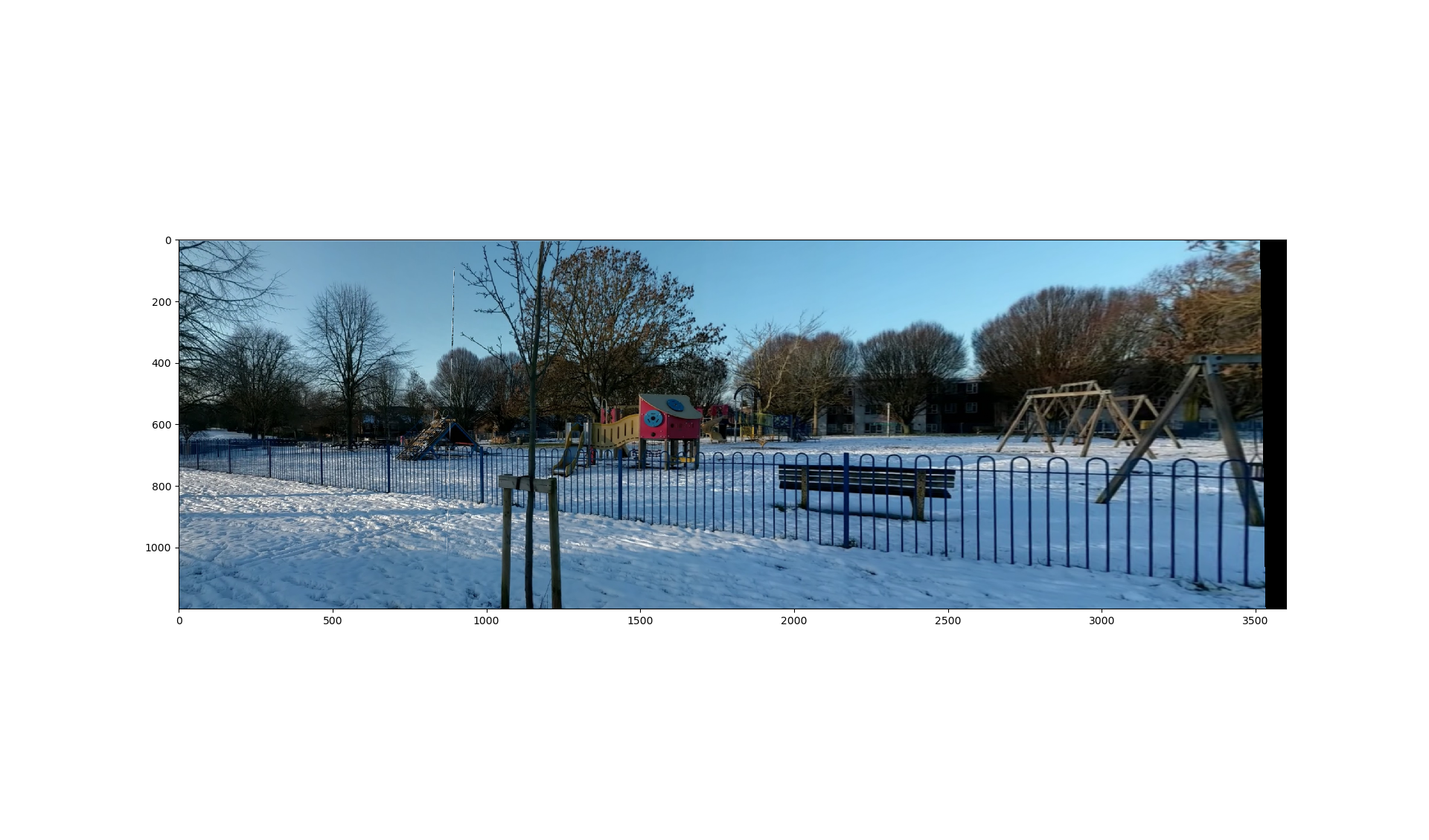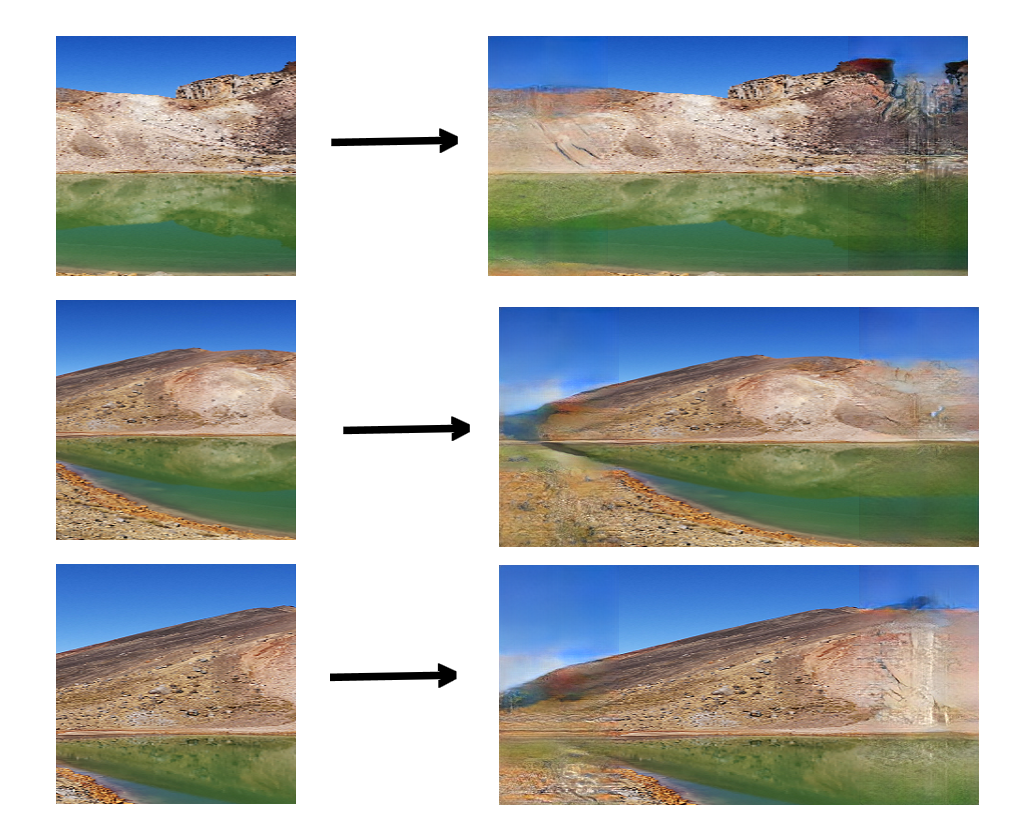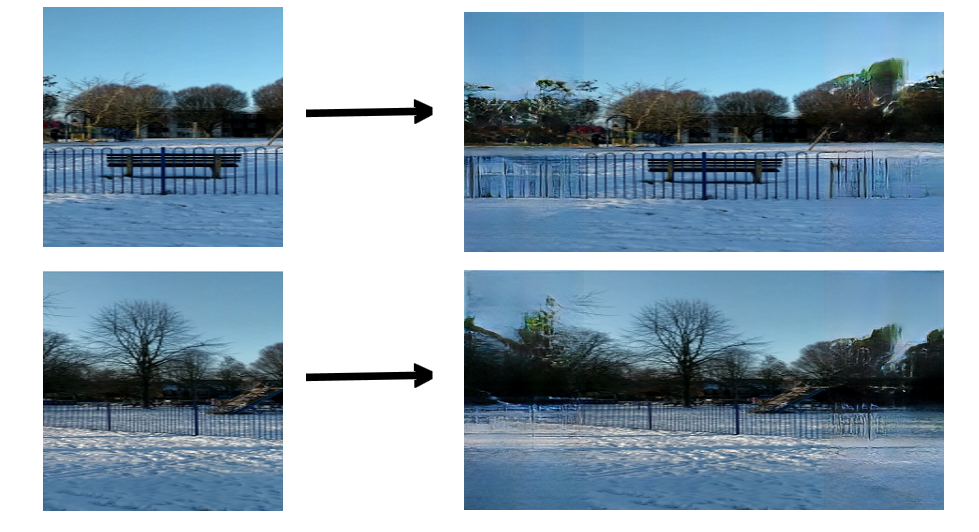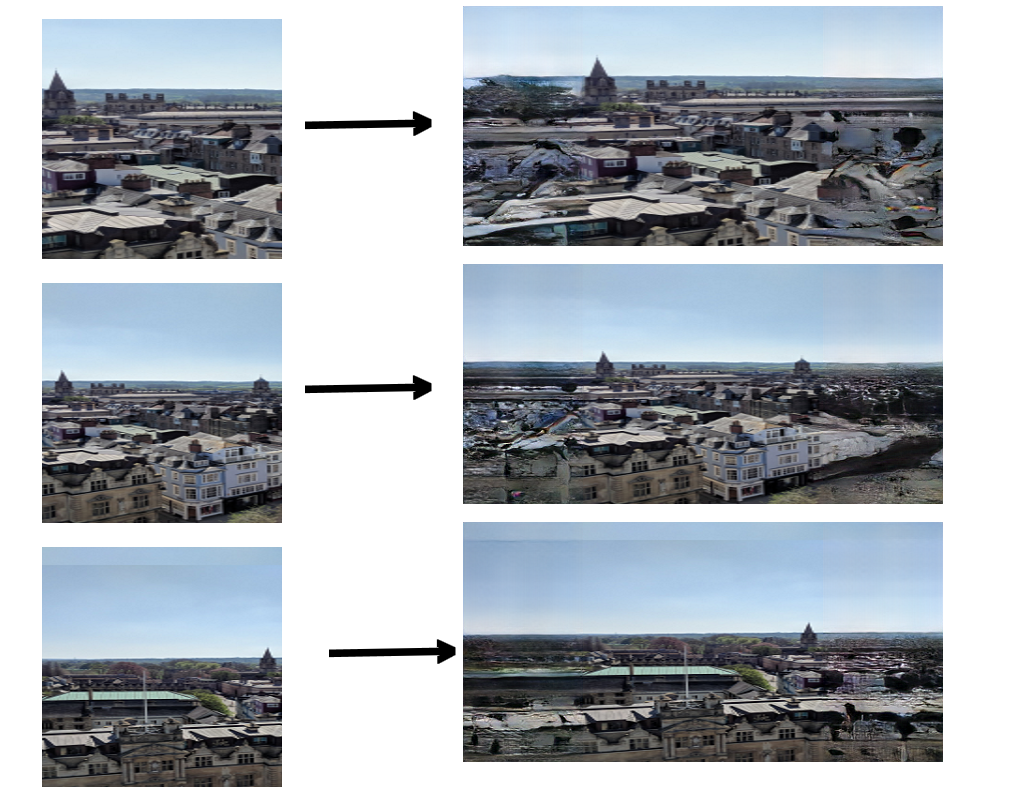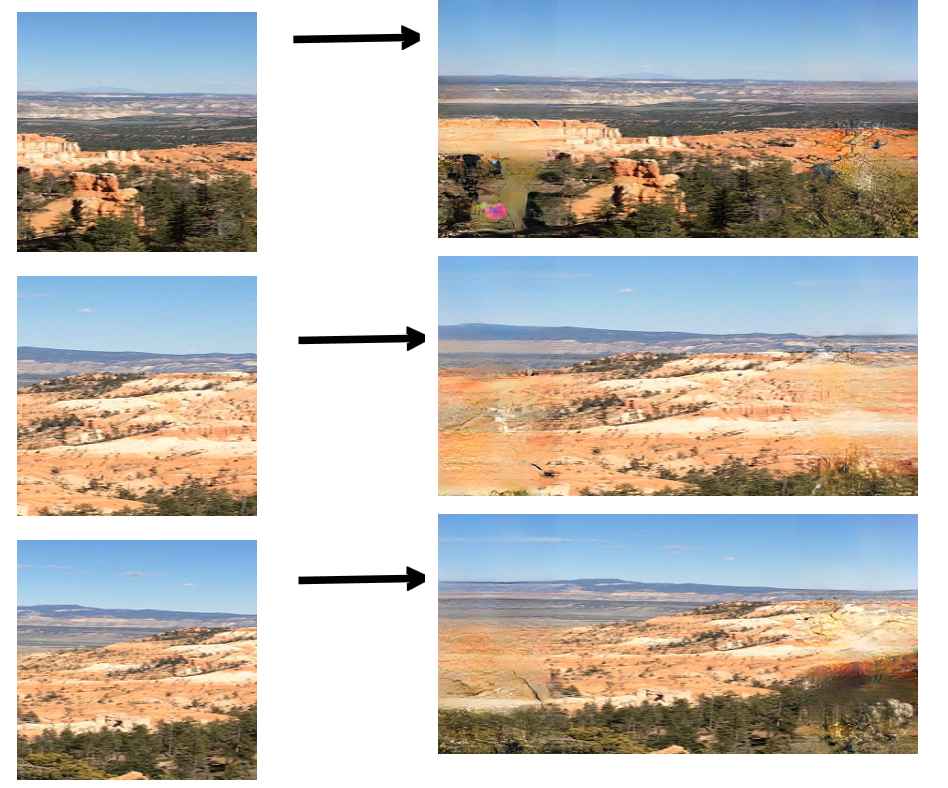| Name | Github Username | Student Number | |
|---|---|---|---|
| Nicholas Berg | [email protected] | 133caesium | 579246262 |
| Neville Loh | [email protected] | Neville-Loh | 737025829 |
A basic image stitching program written by Neville Loh and Nicholas Berg.
python3 image_stitching.py
python image_stitching.py
For the ML extension, the command is:
python ./segmantic_resnet/test.py --dataset 773image_outfill --data_file ./segmantic_resnet/imgs/source_images --load_model_dir ./segmantic_resnet/checkpoints/cityscapes-srn-subpixel-gc64 --model srn --feat_expansion_op subpixel --use_cn 1 --random_crop 0 --random_mask 0 --img_shapes 256,512,3 --mask_shapes 256,256 --g_cnum 64
Running the main file without arguments will result in the default image being stich to gether
Python 3.8 or above, for dependancy, please refer to requirement.txt
The trained ML models can be downloaded from this google drive folder (large files).
The training set can be downloaded from the places2 website
usage: python3 CS773StitchingSkeleton.py [-h] [-n N_CORNER] [-a ALPHA] [-w WINSIZE]
[-ph PLOT_HARRIS_CORNER] [-fds FEATURE_DESCRIPTOR_PATCH_SIZE]
[-fdt FEATURE_DESCRIPTOR_THRESHOLD]
[-or ENABLE_OUTLIER_REJECTION] [-orm OUTLIER_REJECTION_STD]
input input2
| Short | Long | Default | Description |
|---|---|---|---|
-h |
--help |
show this help message and exit | |
-n |
--n_corner |
1000 |
Number of corner output by the algorithm. The output image will contain n corners with the strongest response. If nothing is supplied, default to 1000 |
-a |
--alpha |
0.04 |
The Harris Response constant alpha. Specifies the weighting between corner with strong with single direction and multi-direction. A higher alpha will result in less difference between response of ingle direction and multi-direction shift in intensity. If nothing is supplied, default to 0.04 |
-w |
--winsize |
5 |
Gaussian windows size which applied the the squared and mix derivative of the image.A higher windows size will result in higher degree of smoothing, If nothing is supplied, the default widows size is set to 5. |
-ph |
--plot_harris_corner |
False |
Plot the Harris corner response. If nothing is supplied, the default is set to False |
-fds |
--feature_descriptor_patch_size |
15 |
The size of the feature descriptor patch. If nothing is supplied, the default patch size is set to 15. |
-fdt |
--feature_descriptor_threshold |
0.9 |
The threshold of the feature descriptor. If nothing is supplied, the default threshold is set to 0.9 |
-or |
--enable_outlier_rejection |
True |
Enable outlier rejection. If nothing is supplied, the default is set to True |
-orm |
--outlier_rejection_std |
1 |
The outlier rejection standard deviation to include. If nothing is supplied, the default is set to 1 |
python3 CS773StitchingSkeleton.py images/panoramaStitching/oxford_left_berg_loh_01.png images/panoramaStitching/oxford_right_berg_loh_01.png -n 2000
Main Task: Normalized Cross Correlation (NCC) based brute force matching using a precomputed axis-aligned descriptor.
We performed a number of performance optimisations to decrease runtime of our NCC. Additionally, using the intuition that our panoramas would be unlikely to experience drastic rotation around the z axis, we made the assumption that the length and gradiant of the lines connecting features should be tightly distributed. We used statistical anaylsis to design a filtering step which significiantly improves signal to noise (reducing false positive matches without reducing true positive matches). Additionally, we combined our low level implementation of NCC with an existing implementation of NCC based on Solem (2012)'s Computer Vision textbook. Finally, we performed "sanity checks" by testing our system on three different pairs of images, and checking the extent to which unrelated images would be mapped, or similarly the extent to which two identical images are mapped. Lines have been plotted in distinct colour to better visually identify true and false positive matches.
We utilised the VLFeat open source library to more easily implement a SIFT feature detector.
This implementation was used to perform the same tests as our two NCC implementations and HOG implementation, for a comparison
of different feature detectors across a common image set.
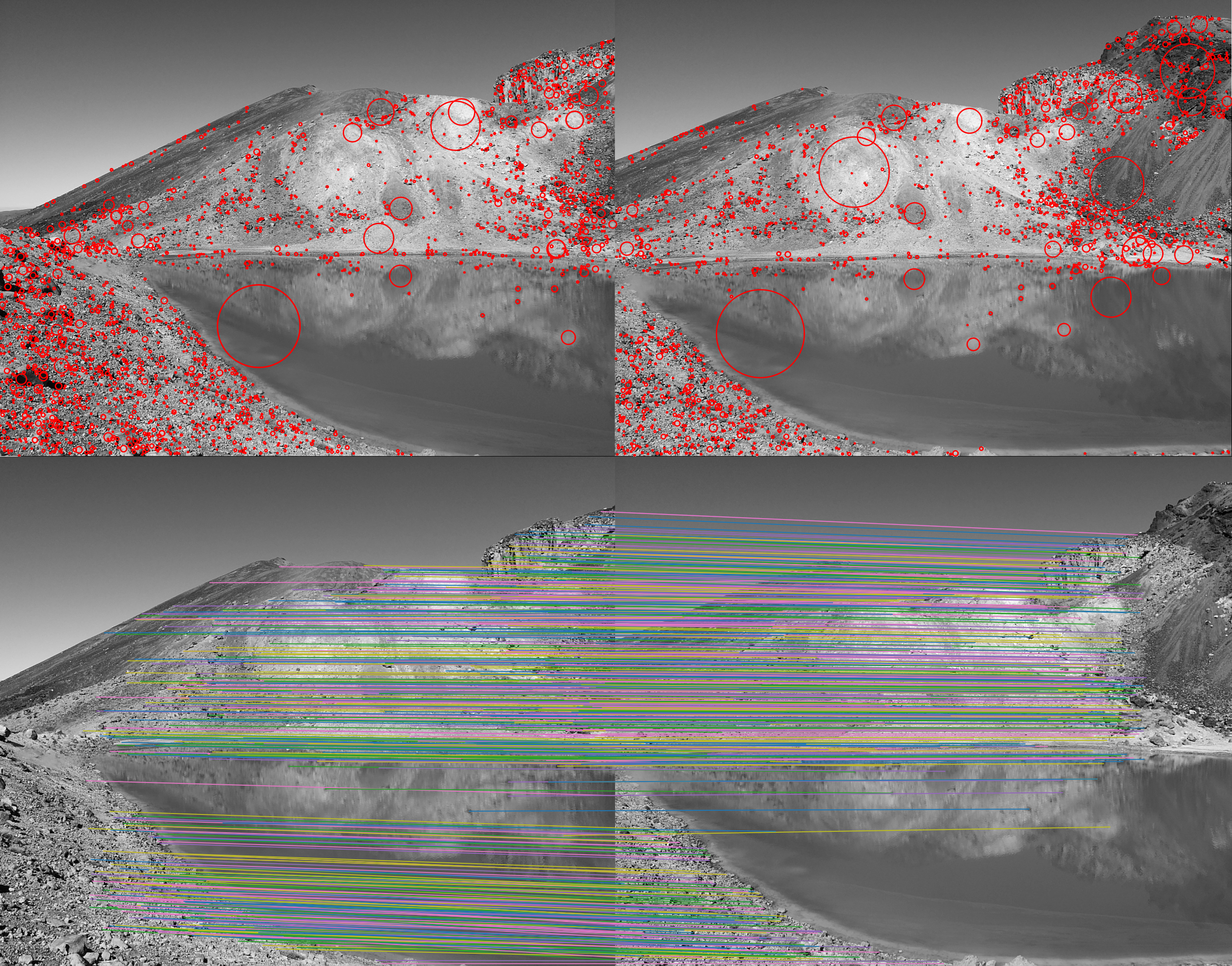
Continuing on from Phase 1, we had a number of python packages that automated the application of our feature detectors and matching algorithms, and that would produce simple statistical analyses. It is interesting to note that only after two iterations of a relatively small number of different implementations, the number of combinations of parameters and methods already yields tens of thousands of possible experimental conditions. Given the focus of this assignment was on NCC, we chose to focus our optimisation on NCC parameters, and considered six thresholds (0.999, 0.99, 0.9, 0.5, 0.1, 0.01) and seven windows radii (3, 5, 7, 9, 11, 15, 21) for two different implementations of NCC (Berg-Loh and Solem) over three pairs of images (Tongariro, Oxford, Playground) for a large but manageable collection of 252 experimental conditions. Notably, not all combinations yielded matched pairs, helpfully shrinking our data set. Additionally we performed "reasonability tests" along the way, including running the same image for both left and right channels, or unrelated images. Generally, under reasonable values, this produced the desired result of a large and tight distribution (for mapping an image to itself) and no matched pairs (for the unrelated images).

We researched implementations of Histogram of Oriented gradients, and combined and modified existing implementations of the HOG feature detector to fit into our workflow, allowing comparison with our existing image sets.
Throughout our development of this image stitching application, we have made several performance and usability enhancements to our codebase to ensure good performance. Particularly for milestone 3, in order to avoid recomputing, we have added caching functionalities that allow us to investigate specific parameters without recomputing the entire process.
We noticed some artefacts were produced that were not a result of the stiching, but rather defects in our source images. This is a common issue in panoramas taken in busy locations as moving people
across the different photos taken at different time can cause strange "ghost like" artefacts. Building on work by Uyttendaele et al. we introduced code to minimise and remove these artefacts.
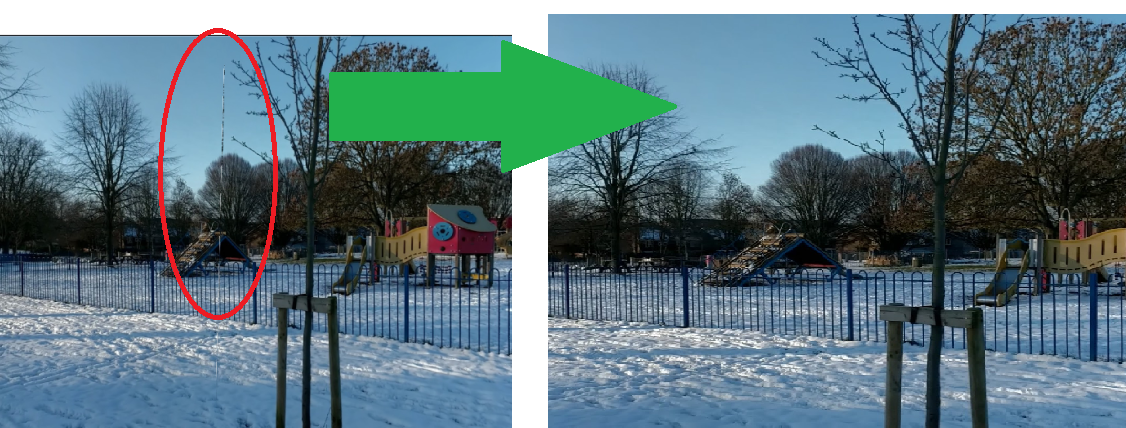
We considered the case where a photo was taken on a hiking trip, but unfortunately the second panorama image was lost (or not taken) and a panorama was still desirable. Given advances in machine learning and the availability of large datasets of landscape images, we hypothesised that it might be possible train an algorithm to predict the surrounds of an image. Having researched this topic, we built on work produced by the dvlab, specficially Wang et al. 2019 by using their algorithm retrained on the places2 dataset. This produced some relatively convincing interpretations of the surrounds, shown below, and suggests promise for further image enhancement.
